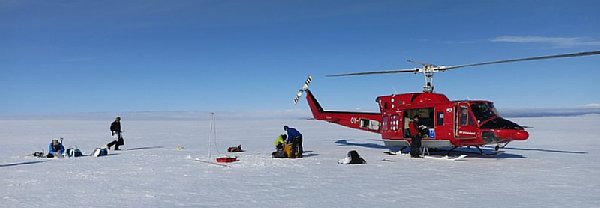
Greenland is losing ice mass under the warming climate
conditions. Half of the ice sheet mass loss is attributed to
increasing ice and snow melt, whereas the rest is due to the ice
discharge into the ocean from accelerated glaciers and ice
streams. Overview of the changing ice mass is monitored by satellite
observations, but field measurements are required to capture the
details and mechanisms of the changes. Moreover, ice is rapidly
decreasing at glaciers and ice caps physically separated from the ice
sheet, but changes of these ice bodies are not accurately
evaluated.
To better understand the recent ice volume change in Greenland and its
drivers, we have initiated a research project as a part of GRENE Arctic Climate Change
Research Project, which focuses dramatically changing Arctic
environment and its global influence. Our field research base is
Qaanaaq, a small village in the northwest coast of Greenland. The aim
of the 5-year research project is to quantify the mass change of an
ice sheet drainage basin in this region, and to investigate the
detailed mechanisms driving the rapid changes. We also use the field
data to improve numerical ice sheet models for more accurate future
projections.